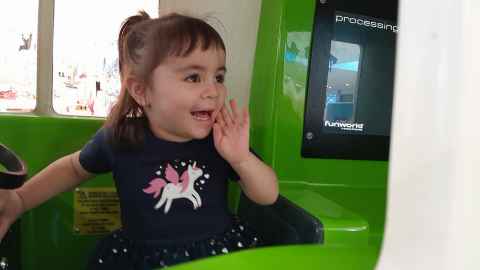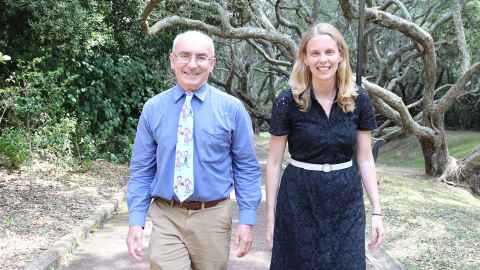$1.4m for research on childhood wheeze
12 February 2025
An HRC grant of $1.4m will support research into a promising new oral medicine for childhood wheeze.

A Health Research Council grant of $1.4m will support research into a promising new oral medicine for childhood wheeze, a condition that sees more than 3,000 preschoolers admitted to hospital each year in New Zealand.
Of children hospitalised with preschool wheeze, one-in-five will be back in hospital within the next year for the same condition, typified by a shrill, coarse whistling or rattling sound when the child tries to breathe.
“Childhood wheeze is a disease for which our current treatments are not very effective,” says paediatrician and researcher at Waipapa Taumata Rau, University of Auckland Professor Cameron Grant, also head of the Department of Paediatrics, Child, and Youth Health.
The research project is called ‘Assessing the Reduction of Recurrent admissions using OM-85 for the treatment of preschool Wheeze’, or ‘ARROW’.

Grant is co-leading the New Zealand arm of the Australasian project with nurse researcher Marisa van Arragon, a doctoral candidate in the Department of Paediatrics at Waipapa Taumata Rau, University of Auckland.
The trial of OM-85 will involve more than 1,000 children under five who have repeatedly visited a hospital in New Zealand or Australia with childhood wheeze, a condition where airways are partially blocked, usually triggered by a cold, flu, RSV, or other viruses.
“We treat childhood wheeze in preschool aged children with asthma medicines, even though the pathophysiology is different from asthma,” Grant says.
“Plus, asthma medicines have limitations, including environmental harms and side effects, which are particularly concerning in younger children.”
The medicine being used in this study, OM-85, can be taken as a drink. OM-85 contains several killed respiratory bacteria, which prime the immune system to fight respiratory viruses.
The pressing issue Grant sees in his clinical work is a tendency for these children to make repeated visits to hospital with wheeze, creating enormous stress for families.
“Some of the children who are involved in the project have already had over 20 admissions to hospital,” Grant says.
Two pilot research projects confirm Māori and Pacific families are over-represented in children being re-admitted to hospital with wheeze.
An audit of visits to Waitakere Hospital in Auckland showed Māori children were twice as likely to be admitted with wheeze, and 30 percent of Māori children came back to hospital with wheeze compared with 16 percent of non-Māori.
An audit in Waikato Hospital of patients aged one to five years admitted to the emergency department with wheeze, showed the rate of re-admission was twice as high for Māori and Pacific compared with ‘European and other’.
Funding from Te Niwha, in 2024, enabled Grant and van Arragon to take the project into the community and to develop relationships with primary care practices, kōhanga reo, pharmacies, and other healthcare providers in Auckland and Waikato.
Grant says developing relationships within the community and with Māori whānau has been a project highlight.
The study also creates opportunities for nurses and emerging researchers. As an example of this, Claudia Reid, a Māori medical student at Waipapa Taumata Rau, University of Auckland, is doing a project interviewing wāhine Māori, whose children attend kōhanga reo in the Waikato, around access to care when their tamaiti has a respiratory illness.
The ARROW study started in 2022 in Australia and a little later in Aotearoa, New Zealand.
So far, more than half of the more than 160 children enrolled in the study in New Zealand are Māori or Pacific. In Australia and New Zealand, about 600 children have already been enrolled in the trial. The trial uses a randomised, placebo-controlled and double-blinded design.
In addition to preventing hospital admissions and other healthcare visits, the research team hopes that OM-85 will reduce antibiotic prescribing and the use of propellant inhalers, which are highly polluting.
“The molecules in the propellants used in inhalers are 3,000 times more globally warming than carbon dioxide,” Grant says.
“The World Health Organization says we must reduce the use of propellant inhalers, but young children can't use the alternative dry-powder inhalers, because the technique required to use them is too complicated for young children.
“So, the only way to reduce the use of propellant inhalers in young children is to reduce the number of wheezing episodes they get, through interventions such as OM-85.”
Data from the study will be used to create a cost-benefit analysis which will be submitted to Pharmac as an evidence base for potentially funding the OM-85 treatment.
The ARROW research team includes research nurses from Starship, KidzFirst, Waitakere, Waikato and Tauranga involved in the project.
Grant and van Arragon say the nurses’ professionalism, passionate approach and whānau-centred care are driving this promising research towards making a difference for whānau suffering from the frightening condition of childhood wheeze.